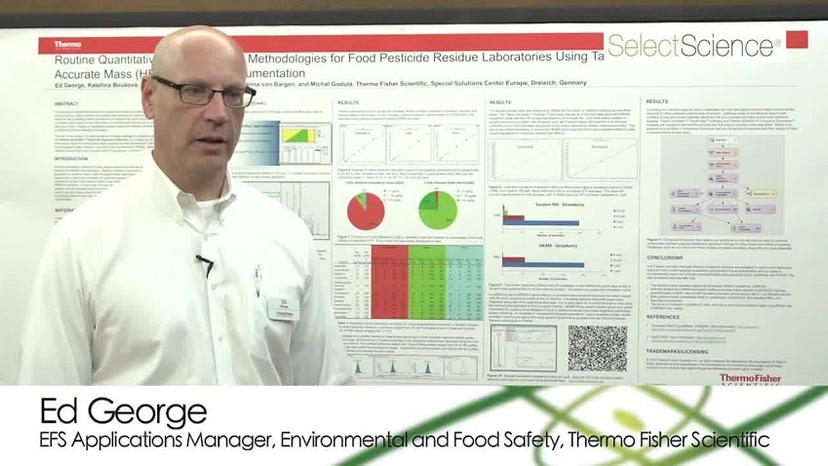Complete Workflows for Pesticide Analysis
In a poster presentation from AOAC, learn how to obtain qualitative and quantitative pesticide analysis results in two simple workflows
17 Jan 2017


The AOAC 2016 Annual Meeting and Exposition, held in Dallas, Texas, aims to educate and facilitate the collaboration of scientists from around the world, through scientific sessions, roundtables, workshops, and poster presentations to meet a variety of analytical needs.
SelectScience® spoke to Ed George, Environmental and Food Safety Applications Manager, Thermo Fisher Scientific, to hear about the Pesticides Explorer Collection – two complete workflows for pesticide analysis, using high resolution accurate mass (HRAM) and/or triple quad mass spectrometry. In this presentation, Ed describes an experiment investigating pesticides within three different matrices.
To assist pesticide residues chemists in the laboratory, Ed explained the development of the Pesticide Explorer Collection: comprehensive start-to-finish LC-MS workflows for both triple quadrupole and HRAM instrumentation. The major benefit of the workflows is simply to help laboratories save time. As the methods have already been tested, the need to optimize hundreds of compounds or build complex spectral libraries is eliminated.
Three matrix types were analyzed during method development with a quick, easy, cheap, effective, rugged, and safe (QuEChERS) extraction without cleanup. These were strawberry, which has a high sugar and water content; leek, which is a complex green vegetable with high pigment content; and flour, which is a dry matrix with low water content. Hundreds of pesticides covering most global regulatory requirements were identified and quantitated on both platforms. The Thermo Scientific™ TSQ Endura™ Triple Stage Quadrupole Mass Spectrometer and the Thermo Scientific™ Q Exactive™ Focus HRAM instruments were used in method development. Ed explained that both platforms include the instrument acquisition methods, software, consumables and compound database information making it easy for labs to get up-and-running. The triple quad approach is typically more commonly used and offers a simple methodology for the analysis of targeted pesticides. On the other hand, HRAM offers excellent quantitation as well but with the additional benefit of being able to screen for non-target pesticides against a comprehensive compound data base. Ed commented that it was “a really powerful tool that allows the expansion of a laboratories analytical scope well beyond routine targeted analysis”.
To make full use of non-target screening capability, the HRAM package includes Thermo Scientific™ Compound Discoverer™ Software, along with a compound database and spectral library of approximately two thousand compounds. Ed stated that using this software enables chemists to easily review statistically significant findings with many other tools to aid in the identification of unknown compounds.
In conclusion, Ed described the Pesticide Explorer Collection as ideal solutions for routine targeted quantitation of pesticides with either the HRAM or triple quadrupole MS platforms. HRAM provides the additional benefit of non-targeted screening allowing laboratories to promote a more comprehensive analysis. Ed noted that these pesticide workflow solutions will “hopefully protect public health better and make laboratories more efficient”.
